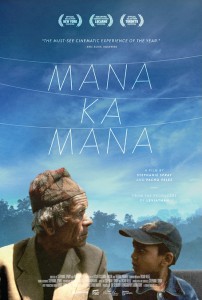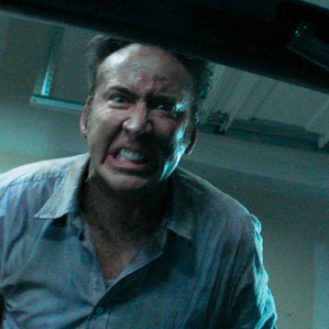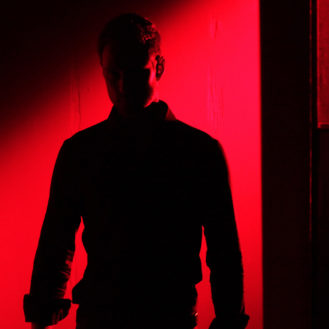This weekend, a form of torture…er…a “spellbinding” new documentary called Manakamana (pronounced Mana-Ka-Mana as suggested by the film’s poster) will be released upon the public. Those moviegoers should buckle up for a stinker, and maybe bring a pillow while they’re at it.
To be honest, I’m surprised I’m writing a review. About halfway through this aggravating experience, I was predicting I would be curled up in the fetal position, rocking back and forth as I softly repeated “Manakamana” under my breath.
Now, listen. Am I being dramatic to hammer in just how much of a big yawn Stephanie Spray and Pacho Velez’s film is? Yes. But, watching Manakamana is unlike any boredom I’ve encountered. Some audiences who have caught the doc at festivals describe the film as an enlightening and rejuvenating sensory test. I , on the other hand, have a hard time even calling this thing a “film”. It’s more of an experiment that had the aptitude to work as a short film, but goes horribly wrong as a long form feature.
Spray and Velez have set up a locked-off camera inside a cable car. The car – which operates like a boxy ski lift – transports people to Nepal’s Manakamana temple where they can worship and pray. The trip takes around 10-minutes to travel uphill. I know this because we experience every second of every trip made in the “film”. According to passengers, the ride downhill is faster, but that doesn’t make our viewing any better.
The people who ride in the car are aware that they’re being filmed, but they don’t reference the camera. They’re allowed to have a conversation with other riders, sit quietly and take in the vast scenery, or bleat. If you’re a goat being shipped, you do more of the last option.
Manakamana exists to show audiences a gentler side of humanism. The filmmakers would probably suggest that their film is a study of sorts, utilizing their craft to give another perspective that’s rarely seen. The repetition in the topics that are talked about inside the cable car such as an opulent river that flows beneath and a booming corn harvest show parallels in our thoughts even though we all have different personalities. It’s also supposed to give outsiders an intimate view of a Nepali lifestyle.
So, the glaringly fat question stands: why does the filmmaking team feel the need to spread this out over two hours using various subjects who add very little when they’re on-screen? Were these takes the best ones? If so, yikes.
Though I can comprehend why people would want to carry out a cinematic experiment like this, Manakamana simply doesn’t work as anything longer than a 20 minute short. What Spray and Velez needed to do was pull together all the segments featuring uphill travelers and edit them together instead of having the audience stick out each uncut 10-minute ride and vice versa for when we’re traveling downwards. It’s unbearable otherwise.
But unfortunately, we’re stuck taking the same monotonous rides up and down the mountainous slopes; hoping someone will break the silence with a topic that could add a bit of variety.
Manakamana needs repetition to help prove a thesis, but if a point has been made several times – such as the ride being long or that the unseen river looks beautiful – there’s no need for us to take the same trip if other passengers are just going to go through the same motions. It’s too much! As much as Spray and Velez shuffle around the passengers to add a visual difference, it doesn’t make a change if they’re all practically saying the same thing; making the film’s mission statement become aggressively redundant.
Then, there are the stretches where the filmmakers really don’t care what they’re showing their audience. Remember that aforementioned goat? Viewers are forced to endure a 10-minute ride in a cable car filled with goats. One goat in particular shows their most unflattering side towards the camera for basically the entire trip. Goody for us…
Then, Manakamana REALLY starts to test the audience’s patience. In a scene that had the intentions to come across as sweet, two musicians tune their stringed instruments and roughly start playing as they descend from Manakamana. With all the endurance and hope we can gather as we try and swallow the tinny plucking, we desperately look for the drop off point the car is headed to in order to escape. It’s enough to make you tear your ears off.
The most stimulated you’ll feel in Manakamana is when we watch an elderly woman eat an ice cream bar that’s quickly melting. We hang onto each lick as the dessert falls apart and we wonder if the woman will finish her treat, or if it’ll crumble as our moviegoing perseverance did.
In past reviews I’ve compared unpleasant experiences such as this to being trapped in a small space and having no where to go. This is a literal example of that. The filmmakers have no respect towards their audience and the “film” ultimately becomes a series of pointless pap.
The emperor isn’t wearing any clothes, folks.





Be the first to comment